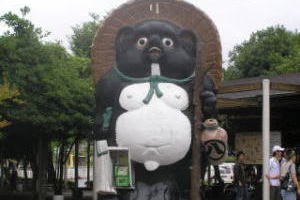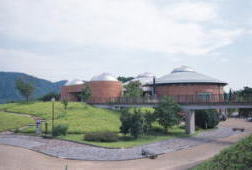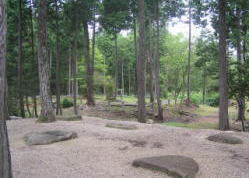TOP > Welcome to Rekishikaido > Shigaraki
Thema area Shigaraki
 The Emperor Shomu started construction on a second palace in Shigaraki in 742.
The Emperor Shomu started construction on a second palace in Shigaraki in 742.
Because the capital was relocated there for just a few years, it was long called the magic kingdom.
In 2000, the remains of the palace were discovered amidst the Miyamachi site, drawing attention all across Japan. Excavations continue today in order to explain this magic kingdom.
Point
Pottery Walk Road:The old road continues from Shigaraki station square to Tosei-cho and Yakiya-cho. Many kilns in this area are still in use today and you can buy pottery along this road.

|
Shigaraki Ceramic Cultural Park
The composite facility provides interesting encounters not only with Shigaraki ceramics but also ceramics from around the world. There is the Museum of Contemporary Ceramic Art, the Institute of Ceramic Studies equipped with kilns, and the Exhibition Hall of Industrial Ceramics where are found a restaurant and gift shop.
Open: 9:30am - 5:00pm (Doors closed at 4:30pm)
Closed: Mondays (Tuesday is Monday is a holiday), winter
Admission fee: Free admission to park (Admission charged to museum)
How to get there: About 20 min on foot from Shigaraki Station of the Shigaraki Kogen Railway
The Traditional Craft Center (Information Center)
Shigaraki is home to one of Japan' six oldest kilns and is the oldest ceramic producing region in Japan with 1,260 years of tradition.
It is said to have begun in 742 when the Emperor Shomu started building his palace in the area, in order to provide tiles imprinted with textile grains and ceramic ware for the palace.
In the Muromachi, Azuchi and Momoyama Periods, the area was busy producing tea ceramics. Come the Edo period, production switched to daily utensils.
Shigaraki is famous for raccoon statues. Once inside the two, statues, small and large, can be seen everywhere.

|
Shigaraki Palace Site (Miyamachi)
The Emperor Shomu started construction on a second palace in Shigaraki in 742. Because the capital was relocated there for just a few years, it was long called the magic kingdom. In 2000, the remains of the palace were discovered amidst the Miyamachi site, drawing attention all across Japan. Excavations continue today in order to explain this magic kingdom.










